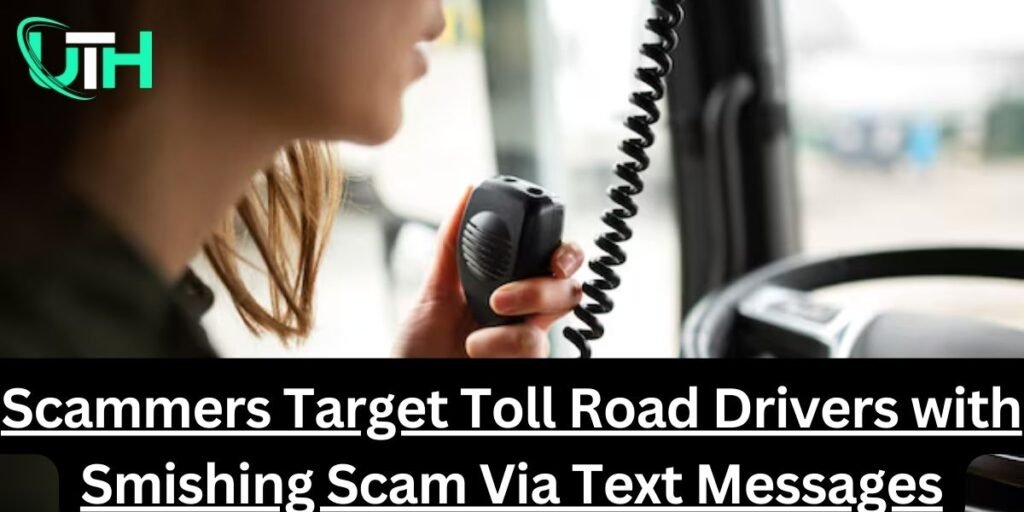Yes, there have been reports of smishing scams targeting toll road drivers in various locations. These scams typically involve fraudulent text messages that appear to be from legitimate toll road agencies.
How the scam works:
- Text message: Drivers receive a text message claiming they have an unpaid toll balance. The message may create a sense of urgency, stating that late fees will be incurred or that their vehicle registration or license could be suspended if they don’t pay immediately.
- Malicious link: The message includes a link that directs drivers to a fake website designed to look like the official toll road agency’s website.
- Information theft: On the fake website, drivers are prompted to enter their personal and financial information, such as credit card numbers, Social Security numbers, or bank account details.
- Financial loss: Once scammers obtain this information, they can use it for fraudulent activities, such as making unauthorized purchases or opening new accounts.
Why This Scam is Effective:
- Trust in Official Texts: Many drivers are used to receiving official communication via text messages about toll payments, making them more likely to trust the scam.
- Urgency and Stress: The fear of additional charges or consequences, like a suspended account, prompts people to act quickly without verifying the legitimacy of the message.
How to protect yourself:
- Be wary of unsolicited text messages. Do not click on any suspicious links or provide any information to unsolicited messages, even if they appear to be from a legitimate organization.
- Verify the sender: If you receive a text message that appears to be from a toll road agency, verify the sender’s identity by contacting the agency directly through their official website or customer service number.
- Do not provide personal information: Toll road agencies will never ask you for your Social Security number, bank account information, or other personal information through a text message.
- Check your toll account online: If you are concerned about unpaid tolls, log in to your official toll road account online to check your balance.
- Use strong passwords and two-factor authentication. Protect your online accounts with strong passwords and enable two-factor authentication to add an extra layer of security.
By following these tips, you can help protect yourself from smishing scams and other cyber threats.
Example: Scammers Target Toll Road Drivers with Smishing Scam via Text Messages
In a recent smishing scam targeting toll road drivers, individuals received fraudulent text messages claiming to be from toll authorities like EZ Pass or TxTag. These messages typically informed recipients of unpaid tolls or overdue balances, urging immediate payment to avoid penalties or legal action.
One such message read:
“EZ Pass: You have an unpaid toll. Pay now to avoid additional fees. Click here: [Fake Link]”
How the Scam Worked:
- Fake Payment Portals: Clicking on the provided link redirected victims to a counterfeit website resembling an official toll payment portal.
- Data Harvesting: The fake site requested personal information such as the victim’s name, address, license plate number, and credit card details.
- Immediate Consequences: Some victims experienced unauthorized transactions on their credit cards shortly after submitting the information.
Key Indicators of the Scam:
- The sender’s phone number was unverified or displayed as “unknown.”
- The message contained spelling errors or generic language, such as “Dear User.”
- The link in the message led to a domain unrelated to the official toll authority’s website.
Real Toll Authority Response:
Authorities like EZ Pass and TxTag issued public warnings, stating that they do not request payments or personal information via unsolicited text messages. Toll agencies emphasized that all payment and account updates should be made through their official websites or mobile apps.
Lesson from the Example:
This example illustrates how scammers exploit the familiarity of toll services to trick drivers into sharing sensitive information. To stay safe:
- Always verify payment requests directly on official websites.
- Avoid clicking on links in unsolicited text messages.
- Contact the toll authority’s customer service if in doubt.
Staying cautious can prevent financial loss and protect personal data from such scams.
Discover More
What is smishing and phishing?
